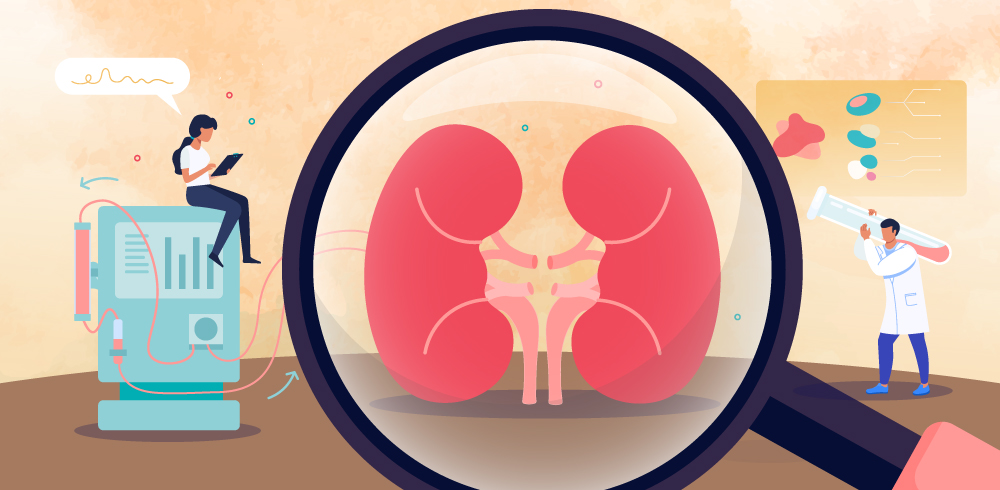INDUSTRY ESSENTIALS
Acute kidney injury requiring dialysis (AKI-D) remains a significant challenge following hospital discharge, with up to one-third of patients continuing dialysis in outpatient settings. While some may recover kidney function, others progress to end-stage renal disease (ESRD).
Obesity has traditionally been viewed as a risk factor for other conditions and the concept of obesity as a standalone disease remains a subject of debate. In a landmark 2025 publication, the Lancet Diabetes & Endocrinology Commission redefined obesity through a clinical lens—shifting away from body mass index (BMI)-based assessments and introducing a diagnostic framework that recognizes clinical obesity as a chronic, systemic illness when specific clinical criteria are met. Growing evidence shows that excess adiposity, independent of other obesity-related diseases, can directly and adversely affect the organ function and overall health of an individual, leading to the typical clinical manifestations of illness. To address the gap in current clinical characterization, the Commission defines clinical obesity as a chronic, systemic disease characterized by functional impairments in tissues, organs, or the individual, directly caused by excess adiposity. The redefinition aims to provide a more medically meaningful framework to guide diagnosis, inform clinical decisions, and shape healthcare policies.
Lancet Diabetes Endocrinol 2025
Rubino F, Cummings DE, Eckel RH, Cohen RV, Wilding JPH, Brown WA, Stanford FC, Batterham RL, Farooqi IS, Farpour-Lambert NJ, le Roux CW, Sattar N, Baur LA, Morrison KM, Misra A, Kadowaki T, Tham KW, Sumithran P, Garvey WT, Kirwan JP, Fernández-Real JM, Corkey BE, Toplak H, Kokkinos A, Kushner RF, Branca F, Valabhji J, Blüher M, Bornstein SR, Grill HJ, Ravussin E, Gregg E, Al Busaidi NB, Alfaris NF, Al Ozairi E, Carlsson LMS, Clément K, Després JP, Dixon JB, Galea G, Kaplan LM, Laferrère B, Laville M, Lim S, Luna Fuentes JR, Mooney VM, Nadglowski J Jr, Urudinachi A, Olszanecka- Glinianowicz M, Pan A, Pattou F, Schauer PR, Tschöp MH, van der Merwe MT, Vettor R, Mingrone G.. Definition and diagnostic criteria of clinical obesity. Lancet Diabetes Endocrinol. 2025;13(3):221-262
Chronic kidney disease (CKD) has a significant global impact, affecting over 800 million people, particularly those from lower socio-economic backgrounds. In Hong Kong, recent survey data indicate that 0.7% of individuals aged 15 and older have been diagnosed with renal impairment.1 CKD is classified into five stages, with stages 4 and 5 linked to considerably higher risks of mortality and cardiovascular complications. Early detection and intervention are crucial for preventing the progression to kidney failure and for effective risk stratification, especially since over 40% of individuals with diabetes—a major risk factor for CKD—are likely to develop the condition.
Acute lower respiratory tract infections caused by respiratory syncytial virus (RSV) are a leading cause of hospitalization in young children. In Hong Kong, RSV is the primary driver of hospital admissions for children under 5 years old with respiratory viral infections, accounting for 50% of deaths in this age group. Among hospitalized RSV-infected patients, 39.4% required mechanical ventilation, while 21.1% needed inotropic support. Additionally, limited local epidemiological data further complicates this challenge.
Chimeric Antigen Receptor T-cell (CAR T-cell) therapy has emerged as a transformative treatment for relapsed or refractory multiple myeloma (R/R MM), which remains challenging despite advances in conventional therapies. Targeting B-cell maturation antigen (BCMA), consistently expressed on malignant
Lancet Oncol. 2024
Lin Y, Qiu L, Usmani S, Costa L, Derman B, Du J, Einsele H, Fernandez de Larrea C, Hajek R, Ho PJ, Kastritis E, Martinez-Lopez J, Mateos MV, Mikhael J, Moreau P, Nagarajan C, Nooka A, O’Dwyer M, Schjesvold F, Sidana S, van de Donk NWCJ, Weisel K, Zweegman S, Raje N, Rodriguez Otero P, Anderson Jr LD, Kumar S, Martin T, International Myeloma Working Group. Consensus guidelines and recommendations for the management and response assessment of chimeric antigen receptor T-cell therapy in clinical practice for relapsed and refractory multiple myeloma: a report from the International Myeloma Working Group Immunotherapy Committee. Lancet Oncol. 2024;25(8):e374-e387.
Overactive bladder (OAB) is a prevalent condition characterized by urinary urgency, often accompanied by increased frequency and nocturia, affecting a significant portion of the population. In Hong Kong, a survey indicated an age-adjusted prevalence of OAB at 15.1%, highlighting the need for effective management strategies tailored to the local context. The condition can severely impact the quality of life, necessitating a comprehensive approach to diagnosis and treatment.
Diabetic macular edema is a prevalent cause of vision loss among individuals in the working-age population, characterized by the disruption of the blood-retinal barrier and the accumulation of fluid and serum macromolecules in the intercellular space. As the incidence of diabetes mellitus
Hyperkalemia, defined as serum potassium >5.0mmol/L, is a potentially lethal condition as it hinders muscle function and myocardial excitability, which may contribute to arrhythmias and sudden cardiac deaths. Epidemiological data suggests the global prevalence of hyperkalemia is around 6.3%, but the
There have been updates in the scientific understanding of cervical cancer since the prior set of cervical cancer prevention and screening guidelines was published by the Hong Kong College of Obstetricians and Gynaecologists (HKCOG) in 2016, including novel nomenclature developed by the World Health Organization (WHO). New technologies such as 9-valent vaccines offer wider coverage against human papillomavirus (HPV) infections that lead to cervical cancer with added coverage implemented by population-based vaccination programs like the Hong Kong Childhood Immunisation Programme (HKCIP). Additionally, it was reminded that HPV tests need to be clinically validated and target high-risk strains including HPV16 and HPV18 to be effective for screening and triaging.
Anal cancers are predominantly preceded by screening-detectable high-grade squamous intraepithelial lesions (HSILs). Despite being relatively uncommon in the general population, possessing an incidence rate of 1.7 per 100,000 person-years, anal cancers disproportionately affects specific groups of individuals, particularly people with human immunodeficiency virus (HIV), solid organ transplant recipients and women with a history of vulvar cancer or precancer.
Trending Posts



















